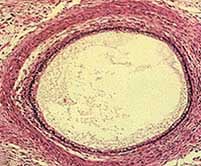New primate stem cell

All the replacement tissues with none of the ethical dilemmas? <br>© Science <br>
Dividing, unfertilised eggs could offer new therapeutic option
US researchers have cloned stem cells from the unfertilized eggs of primates – our closest animal relatives. The achievement suggests it may be possible to grow cells that can give rise to any tissue in the human body without cloning and destroying human embryos.
Some researchers in the field doubt whether the technique will work in humans. And opponents of therapeutic cloning do not believe the new cells solve any of the ethical dilemmas of producing embryonic stem (ES) cells.
Michael West at Advanced Cell Technology (ACT) in Worcester, Massachusetts, and colleagues tricked macaque egg cells into dividing without having first been fertilized. They used a chemical cocktail similar to the one sperm use to make eggs divide.
The dodge – called parthenogenesis – is done routinely with laboratory mice but ACT is the first to pull it off in primates. The resulting cells, called parthenotes, are clones of their mother. Experiments in mice suggest that parthenote embryos die before developing normally.
Stem-cell researchers’ ultimate goal is to replace any malfunctioning body tissue, such as diabetics faulty pancreas cells or the degrading nerve sheaths in multiple sclerosis patients. One of their greatest challenges is to get stem cells to commit to becoming a particular cell type – a process called differentiation.
Primate parthenotes are, if anything, easier to grow into different tissue types than ES cells, says West: “It’s all there: skin with hair follicles, developing eye tissue.” His team even managed to create nerve cells that could produce dopamine. Human equivalents could replace the brain cells destroyed by Parkinson’s disease.
Limited application
“It’s an interesting step,” says Harry Griffin, of the Roslin Institute in Scotland, birthplace of Dolly the cloned sheep. But he doubts whether parthenotes will provide an alternative to therapeutic cloning – itself a long way from becoming a medical reality.
Azim Surani, a developmental biologist at Cambridge University in England agrees: Parthenote cells lack the influence of male chromosomes, which have subtle effects on cell growth and development. Although West’s cells grow in the test tube, “we cannot assume that they will behave normally when implanted in an organism,” he says.
Plus stem cell therapy aims to produce cells from the patient’s own tissue that exactly match their bodies cells. And the majority of diseases that stem cells would treat are age-related. Older women no longer produce egg cells from which to make parthenote stem cells, says Griffin.
West admits that parthenotes’ potential is not fully understood. But he feels that their ready availability could be a boon to stem-cell science. “Medical researchers need to have options,” he says.
Still controversial
Unfortunately parthenotes don’t side-step all objections to creating human embryos as a source of stem cells. “The ethical issue is not solved by this,” says Bill Saunders, spokesman for the Washington DC-based Family Research Council, which opposes the use of embryos in research.
Parthenotes, although unfertilized, do form embryos, so they are living, Saunders argues. “Single-celled organisms that have the capacity to divide and grow are a member of the human species,” he says.
References
- Cibelli, J. B. et al. Parthenogenetic Stem Cells in Nonhuman Primates. Science, 295, 465(2002).
Media Contact
All latest news from the category: Life Sciences and Chemistry
Articles and reports from the Life Sciences and chemistry area deal with applied and basic research into modern biology, chemistry and human medicine.
Valuable information can be found on a range of life sciences fields including bacteriology, biochemistry, bionics, bioinformatics, biophysics, biotechnology, genetics, geobotany, human biology, marine biology, microbiology, molecular biology, cellular biology, zoology, bioinorganic chemistry, microchemistry and environmental chemistry.
Newest articles

Bringing bio-inspired robots to life
Nebraska researcher Eric Markvicka gets NSF CAREER Award to pursue manufacture of novel materials for soft robotics and stretchable electronics. Engineers are increasingly eager to develop robots that mimic the…

Bella moths use poison to attract mates
Scientists are closer to finding out how. Pyrrolizidine alkaloids are as bitter and toxic as they are hard to pronounce. They’re produced by several different types of plants and are…

AI tool creates ‘synthetic’ images of cells
…for enhanced microscopy analysis. Observing individual cells through microscopes can reveal a range of important cell biological phenomena that frequently play a role in human diseases, but the process of…





















